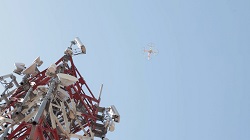Greek operator Cosmote has used smart glasses, airborne cameras on drones and smart watches as part of a demonstration with Ericsson about how wearable tech can help manage a network.
The test was conducted during field maintenance at an active network site in Thessaloniki. Ericsson provided software that integrates wearables with an operator’s network operation centre.
It is unclear whether Ericsson is solely providing the software, or whether it has also built the wearables and drones.
Personnel wearing smart glasses were able to sent back information to network experts at the network management centre. Ericsson said using this technology improves quality control on the likes of site inventory, diagnosis and troubleshooting. It also increases the safety and security of on-site workers.
Airborne cameras on drones allow network engineers to inspect masts remotely and monitor issues without having to access difficult to reach areas.
Nikolaos Skiathitis, Group Executive Director Network Operations & Fault Management Fixed & Mobile at COSMOTE’s owner OTE, said: “Today’s demonstration marks a milestone on how technology is helping us transform our operations to the better by introducing completely new ways in our work.
“With the use of smart glasses, smart watches and remote-controlled flying cameras, we can improve the whole process of site inspection, always to the benefit of the consumer. At the same time we can become even more efficient, as our experts in central offices can remotely support field technicians wherever they through a live video connection.”
Michele Gressani, Head of Operations and Managed Services South-East, claimed the introduction of wearables in field maintenance could revolutionise the way operators service and maintain their networks.
He said: “This is truly an example of how ICT is transforming the way we work and takes us one step closer to the Networked Society of the future where anything that can be connected, will be connected to the benefit of the economy, the environment and society.”



